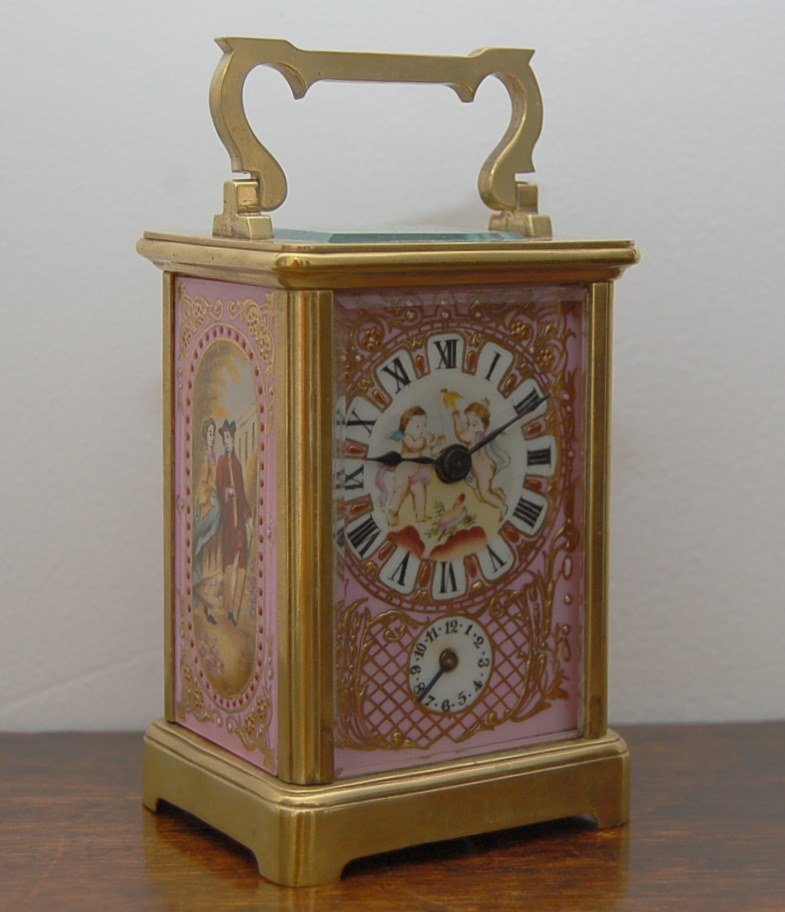In the world of horology, carriage clocks stand as both functional timepieces and exquisite examples of intricate engineering. As we peel back the layers of history, we unveil the fascinating complexities that lie “Behind the Dial.” These portable timekeeping companions have journeyed through centuries, their mechanisms telling stories of innovation and craftsmanship. Join us on a voyage through the mechanical wonders concealed within the seemingly simple façade of carriage clocks.
The evolution of carriage clocks
Originating in France during the 19th century, carriage clocks were initially designed for the burgeoning travel culture of the time. Their compact size, durable construction, and elegant aesthetic made them the perfect companions for individuals on the move. As technology progressed, so did the design and functionality of carriage clocks, turning them into prized possessions that seamlessly blended utility and sophistication.

The anatomy of precision
Carriage clocks boast a precision that belies their modest size. At the core of carriage clock engineering lies a labyrinth of intricacies that elevates these timepieces to the pinnacle of mechanical artistry. The precision-engineered escapement, a marvel of micro-mechanics, orchestrates a ballet of precisely calibrated movements. The mainspring, an unseen powerhouse, stores and releases energy with controlled grace, ensuring a seamless passage of time. Gears, meticulously designed and finely toothed, form an intricate network, transferring energy with minimal friction. The escapement’s gentle tick-tock, imperceptible to the untrained ear, is a testament to the harmonious synchronization of these meticulously crafted components. Every nuance of design, from the placement of jewels for reduced friction to the calculated oscillation of the balance wheel, contributes to the flawless orchestration of timekeeping within the compact dimensions of a carriage clock. In this symphony of engineering, the carriage clock not only keeps time but also stands as a testament to the brilliance of those who masterfully manipulate the mechanics behind the dial.
Materials and craftsmanship
Crafted with an attention to detail, carriage clocks showcase a fusion of artistic flair and mechanical ingenuity. The cases, often made of brass or gilt-brass, offer both durability and a canvas for intricate designs. Glass panels not only protect the delicate mechanisms but also allow enthusiasts to marvel at the inner workings. The combination of quality materials and skilled craftsmanship results in a timepiece that is not only functional but also a testament to the mastery of its creators.
Innovation in design
Carriage clocks have undergone various design innovations over the years, adapting to changing tastes and technological advancements. Some feature a single, exposed balance wheel, adding a touch of visual drama to the clock’s face. Others incorporate complications such as alarm functions or striking mechanisms, showcasing the versatility of these portable timekeepers. The evolution in design reflects not only the functional requirements of the era but also the desire to transform these clocks into objects of aesthetic admiration.
The portable companion
What sets carriage clocks apart is their portability. Fitted with sturdy handles and often accompanied by protective leather or brass cases, these timepieces were designed to withstand the rigours of travel. Whether accompanying a 19th-century globetrotter on a transcontinental journey or gracing the bedside table of a modern collector, carriage clocks remain steadfast in their role as reliable and elegant companions.
Maintenance and restoration
Preserving the intricate engineering of antique carriage clocks requires a delicate touch. Regular maintenance, including cleaning, oiling, and adjustment, ensures the smooth functioning of the timekeeping mechanism. Restoration efforts, when necessary, involve a careful balance between retaining the clock’s original character and addressing the wear and tear that naturally occurs over time. We can help you with your repairs or maintenance in our shop in Nedlands, WA.
